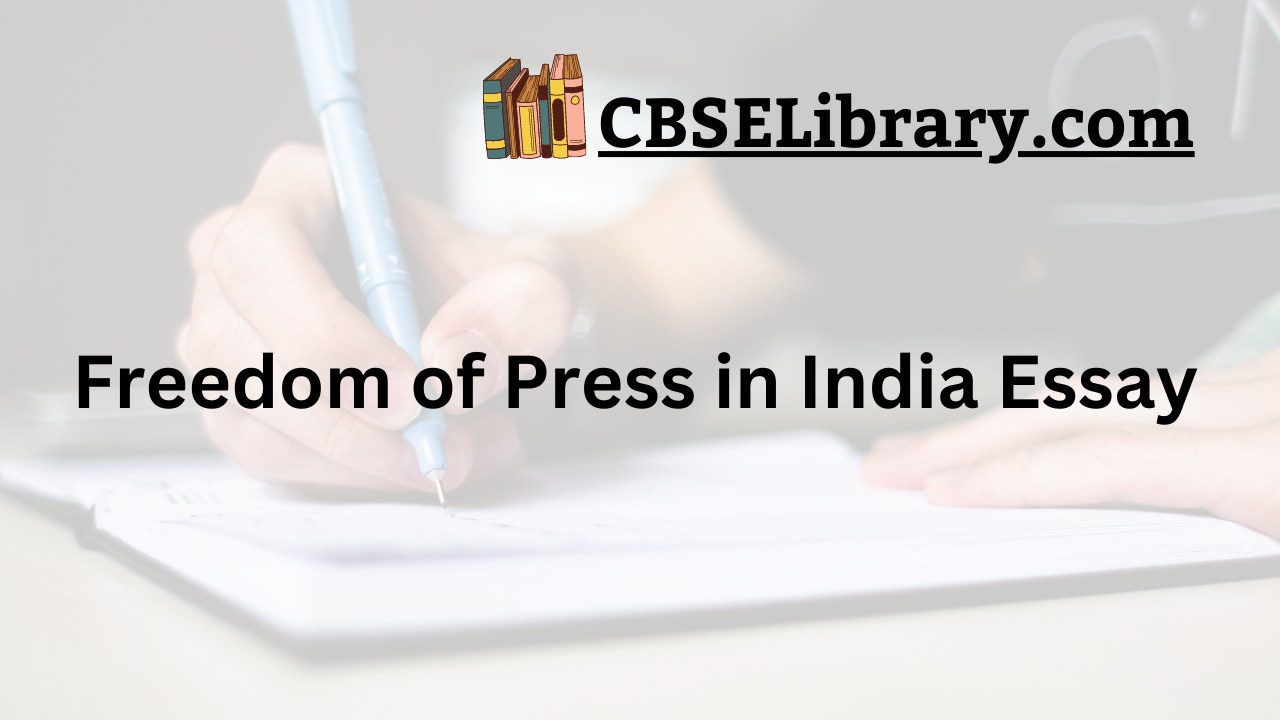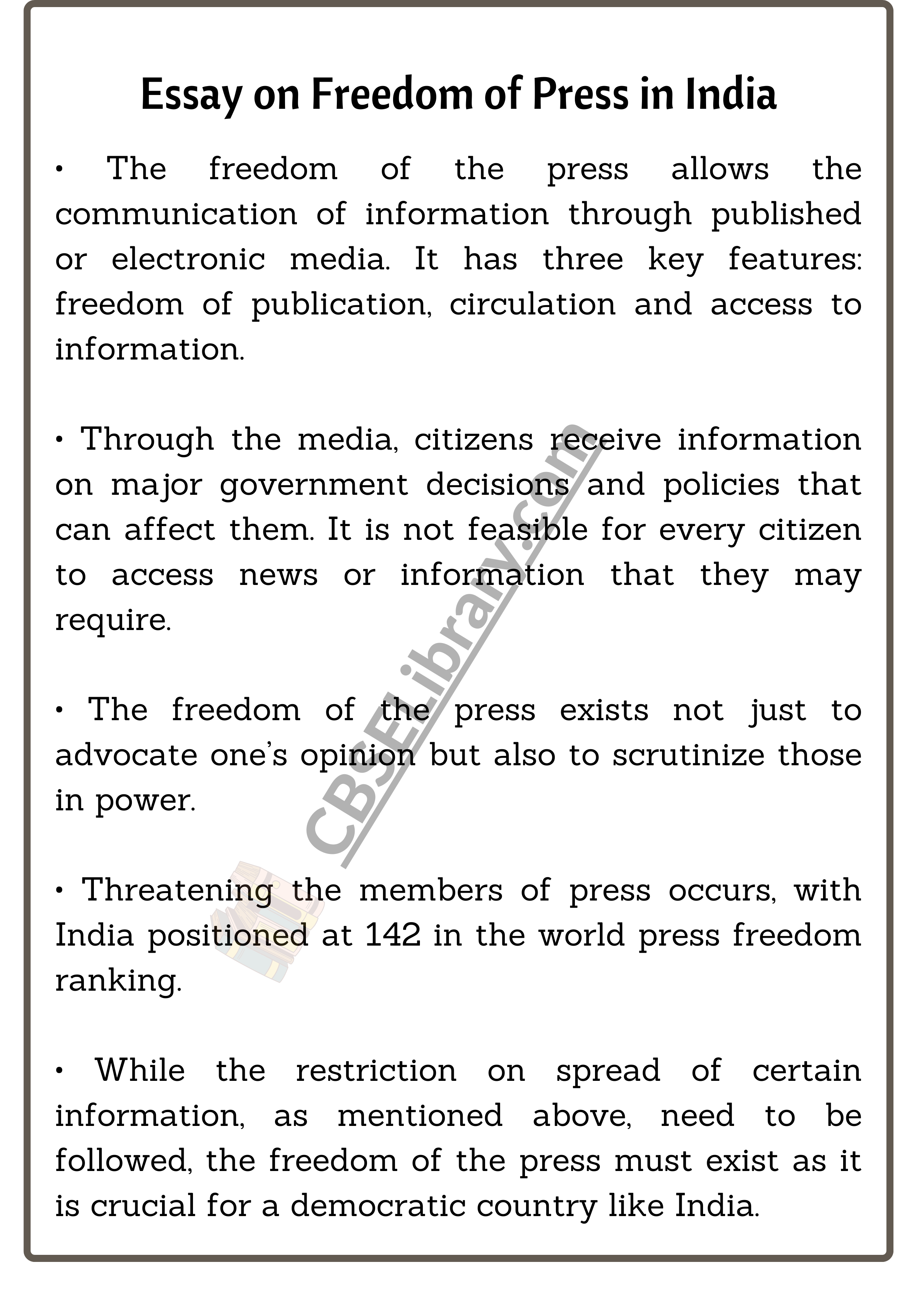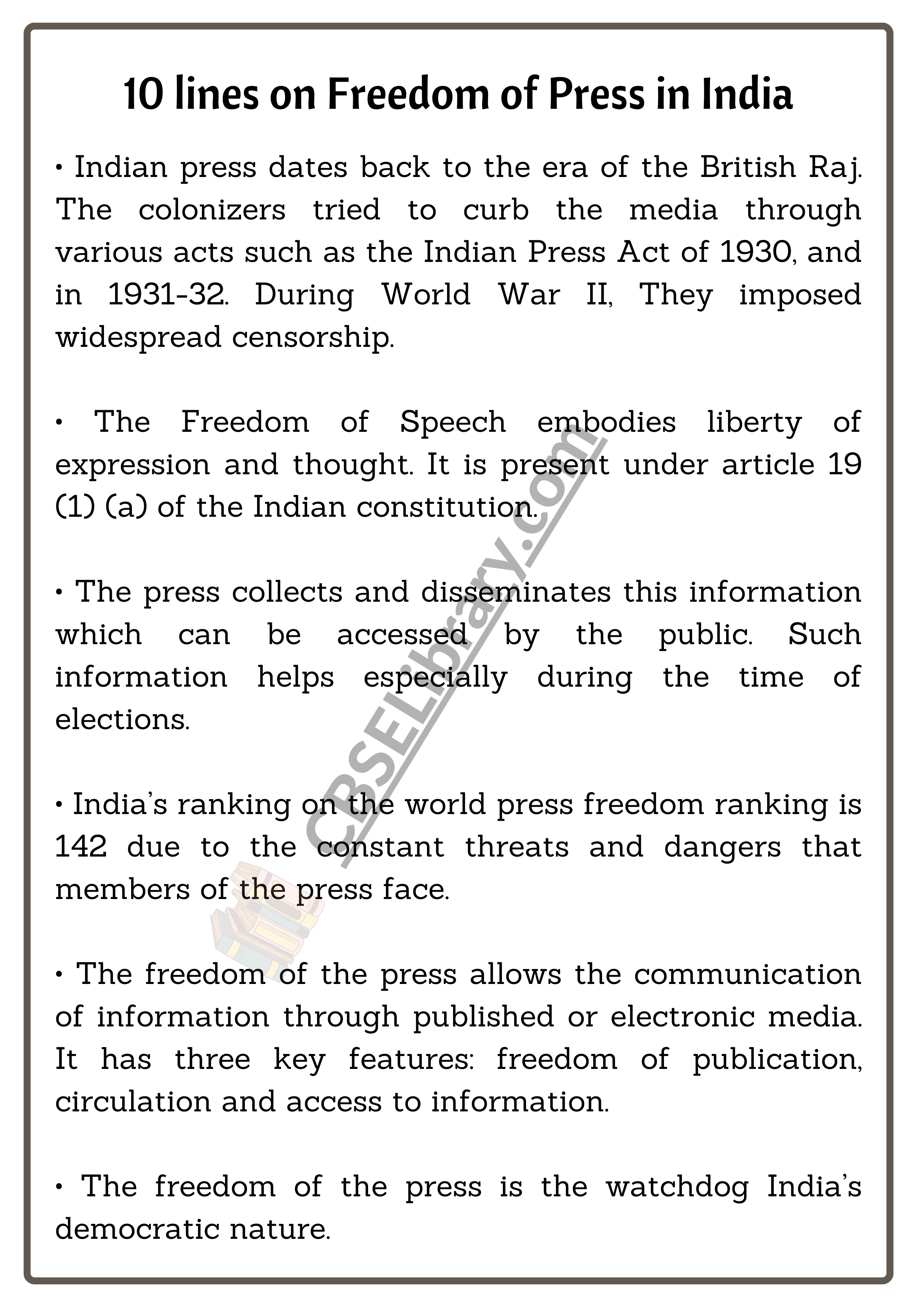Freedom of Press in India Essay: Freedom of the press has always been a contentious issue. The freedom of press refers to the freedom of using vehicles such as publishing houses or media house to communicate information. The press is the driving force for knowledge; it is the only link between what happens in the world and the public. Through the media, we obtain all information necessary as it is vital to be aware of what is happening around us. While the freedom of press ensures that the flow of information carries on swiftly, certain restrictions help to keep this information in check and to prevent misinformation. Freedom of the press is an integral part of a democracy.
Long and Short essays on Freedom of Press in India for Students and Kids in English.
There is one long essay on the Freedom of the Press of 500 words and one short essay of 200 words on the Freedom of the Press.
Long Essay on Freedom of Press in India 500 words in English
Freedom of Press in India Essay is usually given to classes 7, 8, 9, and 10.
The constitution of India guarantees fundamental rights to recognized citizens. The establishment of the Indian press dates back to the era of the British Raj. During our freedom struggle, newspapers and magazines published articles calling for independence, which the colonizers curbed through various acts such as the Indian Press Act of 1930, and in 1931-32. World War II also had implications on the Indian press as widespread censorship came into effect. After gaining freedom, the constitution was framed with rights to protect the interest of the press.
The Freedom of Speech under article 19 is one among the fundamental rights. The Freedom of Speech embodies liberty of expression and thought. The freedom of the press comes under section 19 (1) (a) of the Indian constitution. Certain restrictions include:
- Sovereignty and integrity of India,
- Friendly relations with foreign countries.
- The security of the state.
- Decency or morality.
- Contempt of court.
- Public order.
These are in article 19(2), and if broken, a person faces the charge of sedition as per section 124A of the Indian Penal Code.
The freedom of the press allows the communication of information through published or electronic media. It has three key features: freedom of publication, circulation and access to information. The media is an essential vehicle of any country as it brings news from around the world to the public. The freedom of the press allows citizens to express their views openly.
Through the media, citizens receive information on major government decisions and policies that can affect them. It is not feasible for every citizen to access news or information that they may require. The press collects and disseminates this information which can be accessed by the public. The freedom of the press allows people to get news and make informed decisions when it comes to elections.
Imposing restrictions on people’s freedom of expression violates the constitution and void. The freedom of the press exists not just to advocate one’s opinion but also to scrutinize those in power. The press creates checks and balance system for the government, assuring that accountability prevails. It unravels corruption, and injustices in society, working for the common good. Through reporting of verified and reliable facts, they paint a picture of what happens around them. It helps vigilance prevail.
The press has the freedom to be able to do its job. Its enemy is censorship. Censorship refers to removing material from published or electronic sources. The use of censorship has often been misused and prevents the spread of relevant information. Threatening the members of press occurs, with India positioned at 142 in the world press freedom ranking. Such hurdles curb the dissemination of information. However, misusing the freedom of the press to spread malicious and false information cannot exist, and we must ensure that reliable and fact-checked information gets published.
While the restriction on spread of certain information, as mentioned above, need to be followed, the freedom of the press must exist as it is crucial for a democratic country like India. The media is the watchdog of our democracy and ensures that its true spirit remains.
Short Essay on Freedom of Press in India 200 words in English
Freedom of Press in India essay will help students of grades I, II, III, IV, V, and VI.
The press is an essential vehicle in any country. The media provides us with information from all over the world and makes them available to citizens. The freedom of speech and expression consists of the freedom of the press. This freedom of speech and expression allows every Indian to express their thought and views openly.
The press provides us with necessary information regarding the government and news about the happenings in the country. They bring together all this information as it is difficult to get hold of them. Such information is essential, especially during elections, when they have to vote.
The freedom of the press helps it to make the government function fairly. The media exposes any wrongdoing and helps to keep a check on those who hold power. Therefore this freedom helps all citizens. It helps to spread knowledge and awareness.
Sometimes, people misuse the freedom of the press to spread the wrong information; fact-checked information and correct facts made available. There are some boundaries that the press cannot cross, in matters of security and decency. They must follow these rules mentioned under the right.Some influential people often thread members of the press for exposing the truth. It is vital to top this. The freedom of the press allows the voice of the people to be heard.
10 lines on Freedom of Press in India Essay in English
These lines can help competitive exam aspirants and making speeches.
- The Freedom of Speech embodies liberty of expression and thought. It is present under article 19 (1) (a) of the Indian constitution.
- Indian press dates back to the era of the British Raj. The colonizers tried to curb the media through various acts such as the Indian Press Act of 1930, and in 1931-32. During World War II, They imposed widespread censorship.
- The freedom of the press allows the communication of information through published or electronic media. It has three key features: freedom of publication, circulation and access to information.
- Certain restrictions on this right are in article 19(2). These include:
- Sovereignty and integrity of India.
- Friendly relations with foreign countries.
- The security of the nation.
- Decency or morality.
- Contempt of court.
- Public order.
- The press collects and disseminates this information which can be accessed by the public. Such information helps especially during the time of elections.
- The freedom of the press also exists to scrutinize those in power. The media creates checks and balance system for the government, assuring that accountability prevails.
- Censorship refers to removing material from published or electronic sources. It is often misused and spread of information prevented.
- India’s ranking on the world press freedom ranking is 142 due to the constant threats and dangers that members of the press face.
- Published fact-checked, and reliable information helps to protect the integrity of this right.
- The freedom of the press is the watchdog India’s democratic nature.
FAQ’s on Freedom of Press in India Essay
Question 1.
Which article contains the freedom of the press?
Answer:
Article 19 (1) (a) of the Indian constitution contains the freedom of the press.
Question 2.
What are the three key features of the freedom of the press?
Answer:
The three key features of the freedom of press include freedom of publication, circulation and access to information.
Question 3.
How can we define censorship?
Answer:
Censorship refers to removing material from published or electronic sources due to the presence of harmful or insensitive information present.
Question 4.
What is India’s position on the world press freedom ranking?
Answer:
India’s position is 142 in the world freedom press ranking.


